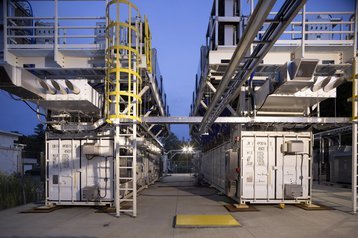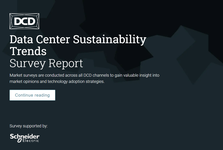Demand for electricity from various sectors, including data centers, which are huge consumers, continues to grow rapidly and is outstripping existing generation and distribution capabilities.
Additionally, the move to replace fossil fuels with renewable sources has already led to constraints and intermittent availability of electricity in several regions worldwide. There is a pressing need to find alternative power generation solutions that are both sustainable and reliable. When developing data centers, attention is therefore turning to how we can incorporate onsite electricity generation to avoid over-burdening local and national electricity grids while contributing to global decarbonization efforts.
Onsite power generation falls into two categories: continuous and variable. Continuous generation involves using engines, fuel cells, directly fueled turbines (e.g. gas), turbines powered by heat from continuous sources, or hydroelectric schemes. Variable generation, meanwhile, utilizes renewable sources such as wind and solar, which can be linked to some form of storage such as battery, kinetic, and pumped storage. The two formats can be combined yet have their own issues; the former needs a continuous source of fuel and the latter large amounts of storage to cover inevitable deficits in power production.
Fuel choices also significantly impact a site's regulatory obligations, efficiency, and sustainability. What are the principal fuel sources that are being considered and the various challenges and opportunities these bring for transitioning to onsite power and energy production in data centers?
Exploring different fuel sources
Natural gas is seen as an effective fuel due to its reliable, well-managed distribution network and high capacity. However, it is carbon-based, and moving away from dependence on fossil fuels is fundamental to the decarbonization of energy networks worldwide. Consequently, many gas grids have started considering alternative energy sources, including the introduction of hydrogen (ideally green hydrogen produced from spare renewable electrical energy), biomethane, and carbon capture.
Although hydrogen is often a preferred choice this energy source has some key challenges to overcome. The production quantities of green hydrogen must be increased exponentially to become a serious contender (there is no existing network that operates at scale) and production efficiency needs to be improved. Further, hydrogen molecules are very small in comparison to methane, presenting challenges in terms of leakage. The need to transport large quantities of gas hinders the objective of decarbonizing the delivery of energy, while hydrogen storage is another concern due to its risk of explosion. All of this demands a much higher level of site management and compliance.
The alternative to directly combusting a gas is to turn to thermal energy generation from sources like biomass, energy from waste, and nuclear Small Modular Reactors (SMRs), which have a very low carbon footprint. Biomass has been used reasonably successfully yet emissions must be treated and providing at scale is difficult. Many examples exist of harnessing energy from waste, particularly in Scandinavia, with heat output also supplied to local district heating networks. However, it is a challenge economically and, despite its good sustainability credentials, is tough to achieve at scale.
Looking at nuclear, the introduction of SMRs is being touted as a possible solution. On the flip side, processing the final waste product is challenging and SMRs need to be licensed as a technology type before also being approved for individual sites, a process that can take up to a decade.
With that in mind, energy from waste is probably the most sustainable. However, in the case of data centers there is a significant imbalance between electricity demand and the amount of waste these facilities produce (close to zero). This method is effective in larger towns and cities where waste from other buildings can be used as a fuel source. From a technical standpoint, thermal energy from nuclear SMRs makes sense for data centers; yet due to the numerous barriers in terms of regulatory and public acceptance challenges, implementing it in practice is extremely difficult.
Renewable energy sources, such as wind and solar, are very promising however, their intermittent nature requires substantial onsite energy storage. While large-scale battery or hydrogen storage can address immediate gaps, long-term storage solutions involving potential or kinetic energy (i.e. pumped water schemes) may be required to navigate the variability between summer and winter. There is also the issue of space and site requirements. For instance, to support a data center that would typically fit on a 20-acre site with renewable sources and energy storage, it is likely to require at least another 200 acres of land or more.
As we navigate the path to sustainability, there is greater acceptance that the way data centers are powered will have to change in the coming years; ultimately, the shift towards onsite power generation is critical to overcoming current and future electricity grid limitations.
It is possible to provide uninterrupted power onsite however, detailed energy modeling is essential to assess the viability of onsite generation by evaluating factors such as energy demand, local land availability, site location, and integration with the grid for energy export. Detailed energy modeling and a thorough understanding of fuel availability, delivery, and energy storage options will also be critical for data center developers to make informed decisions that align with regional sustainability goals.








